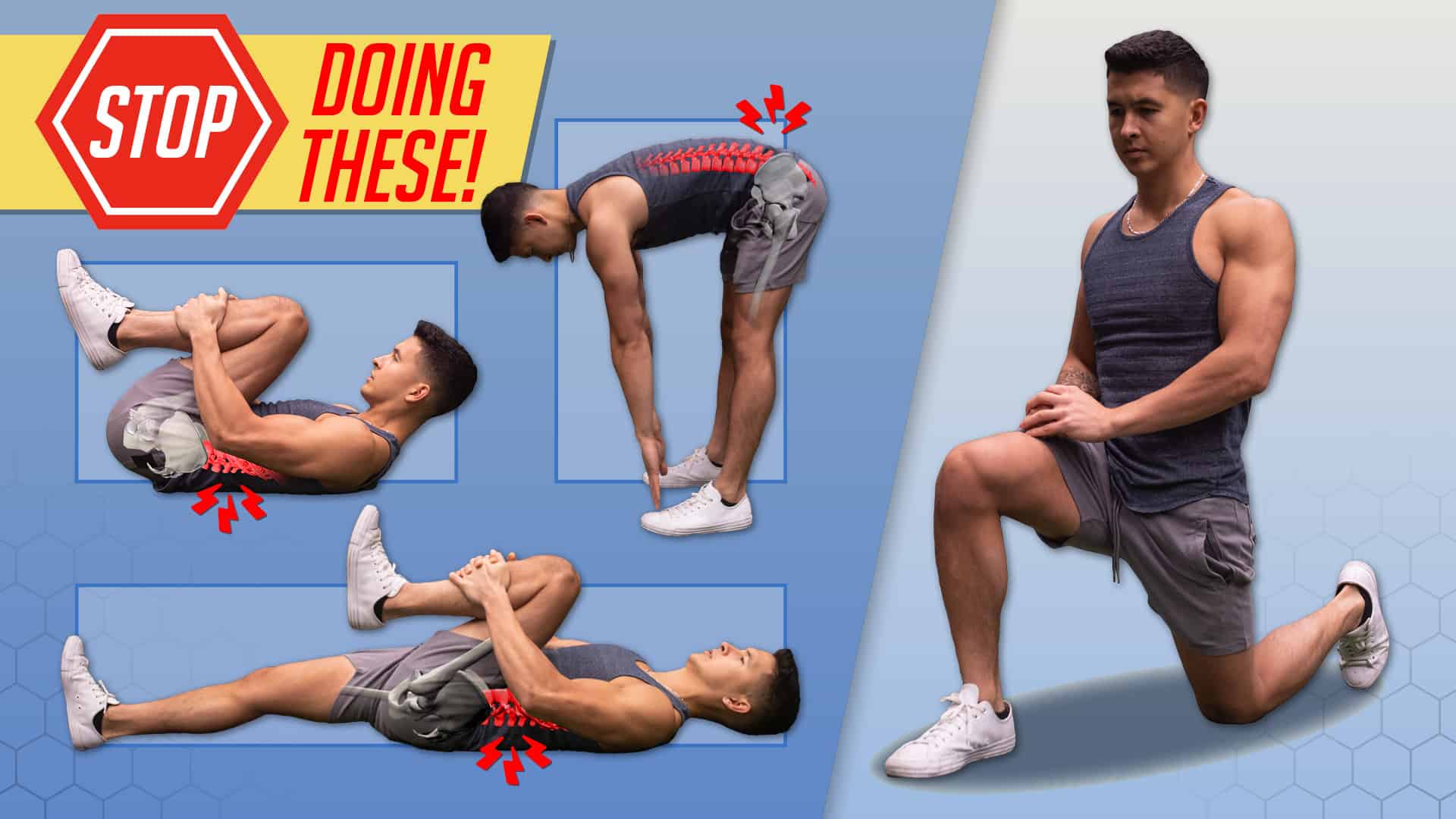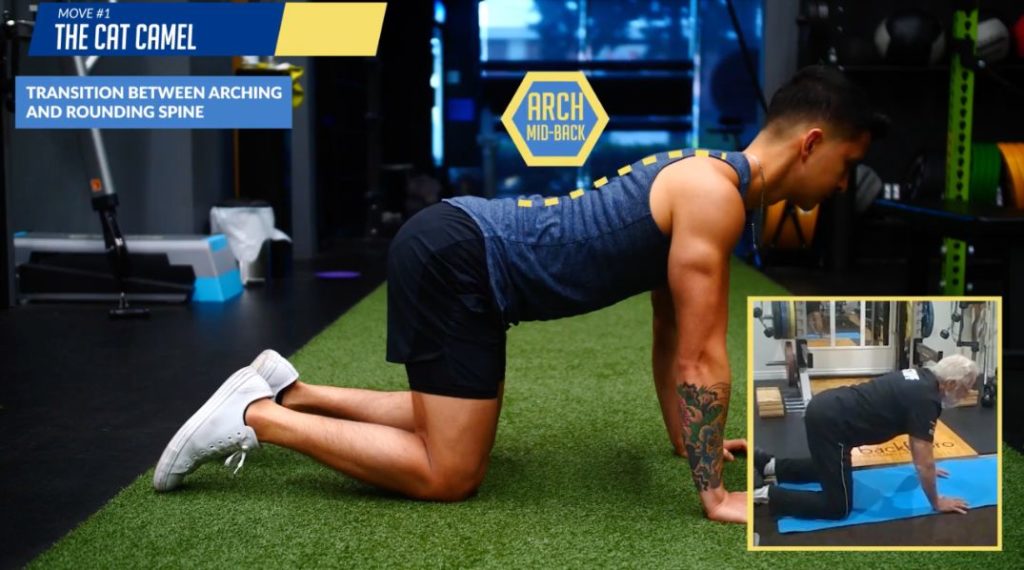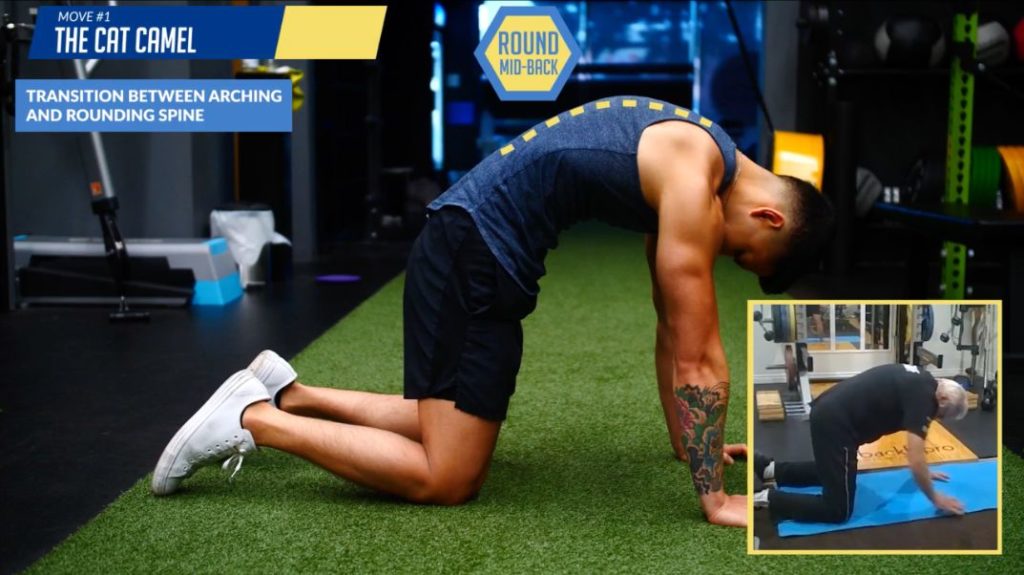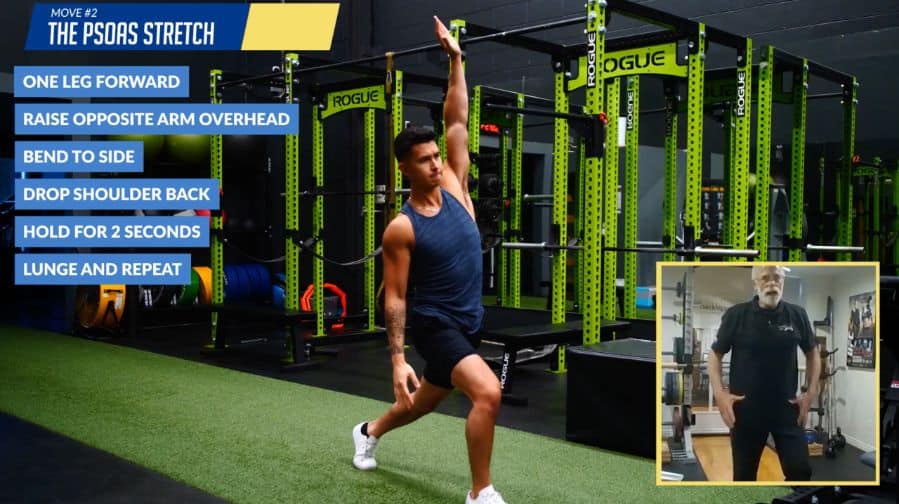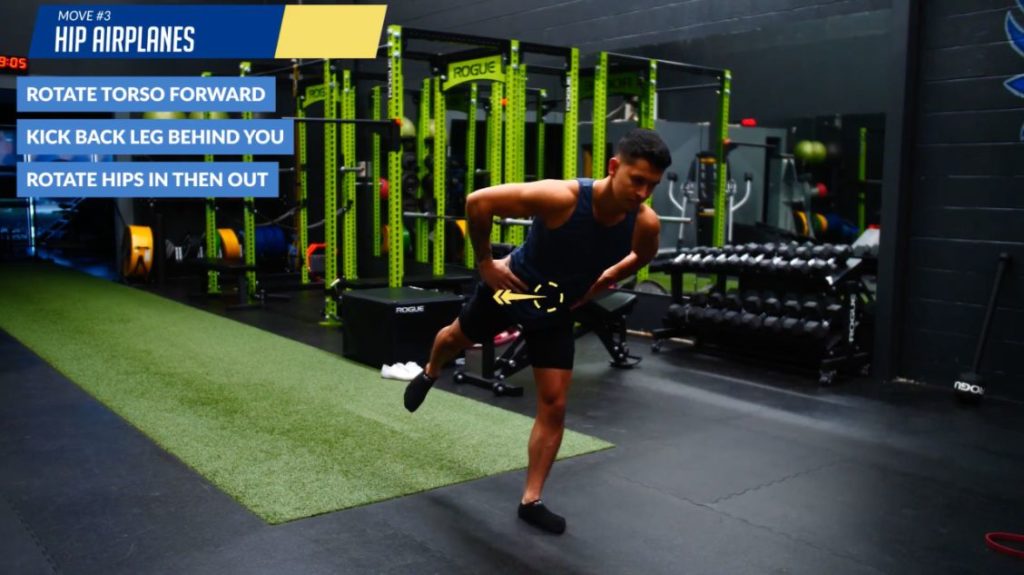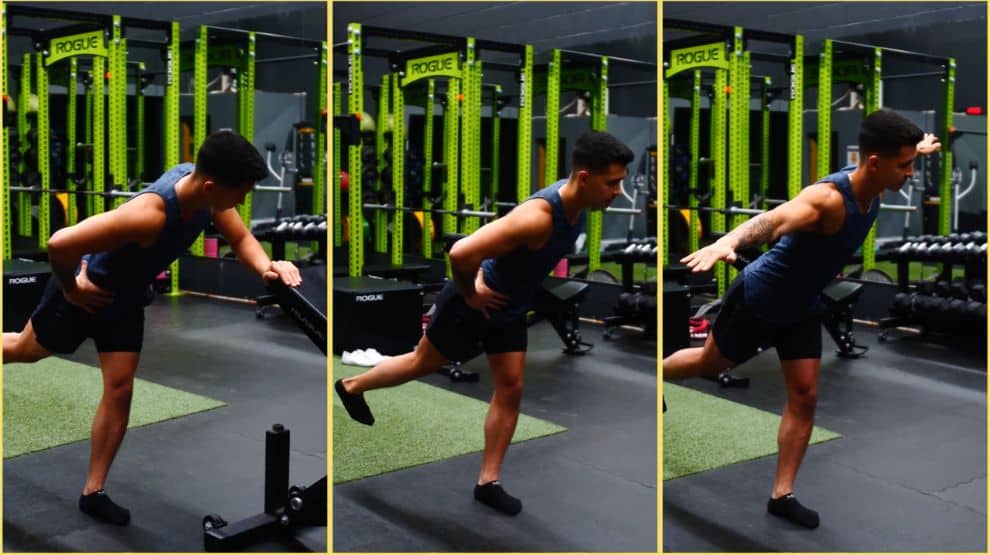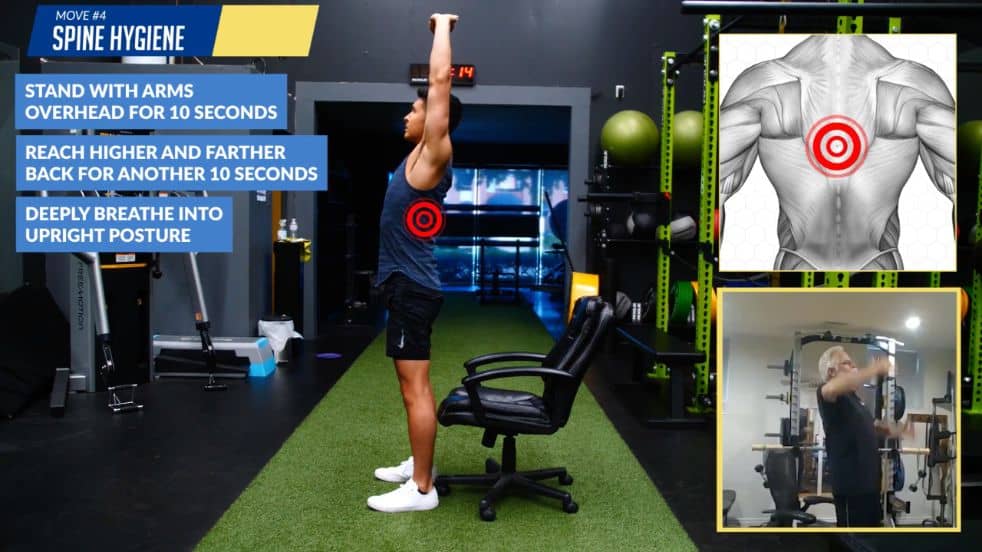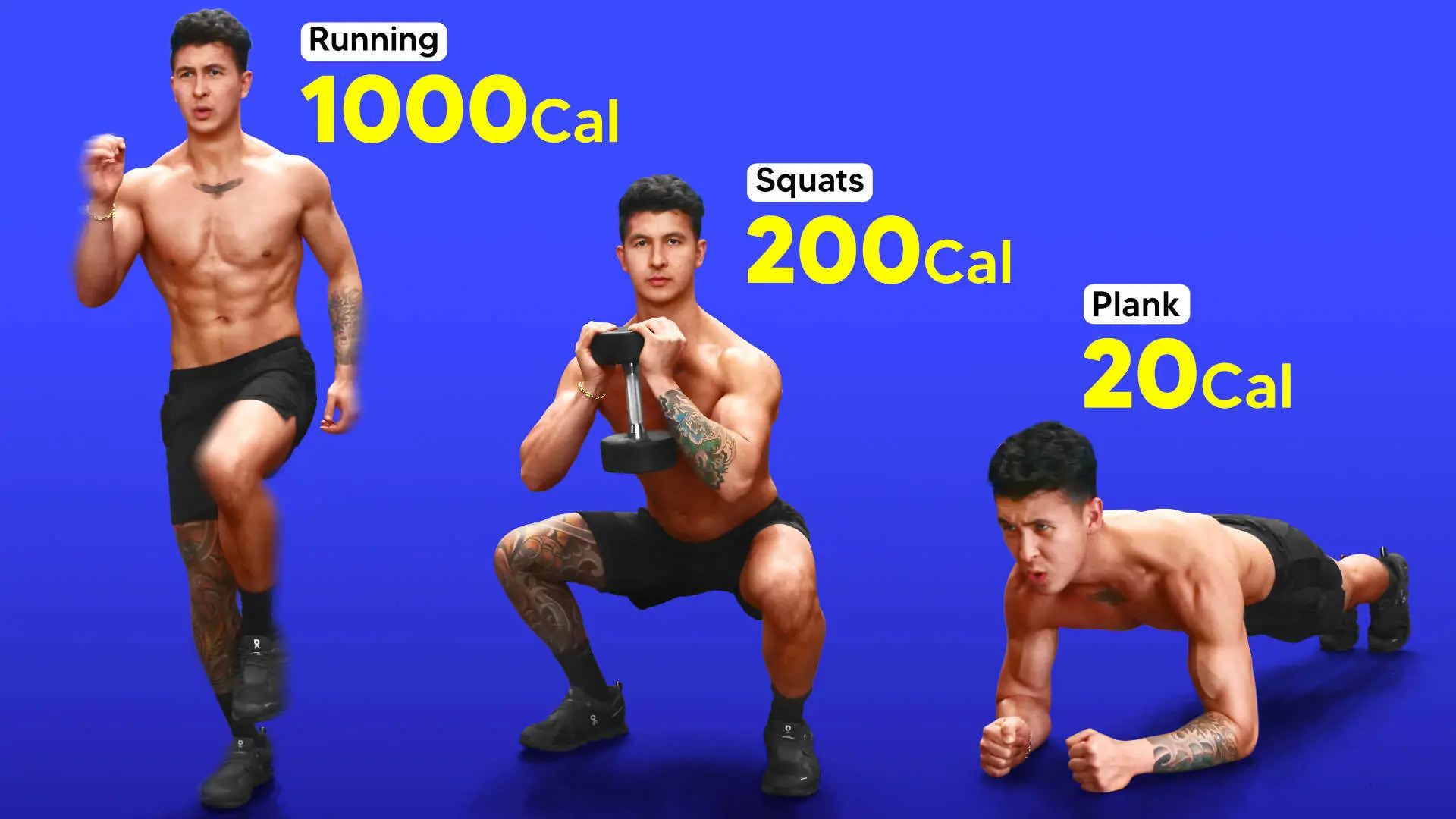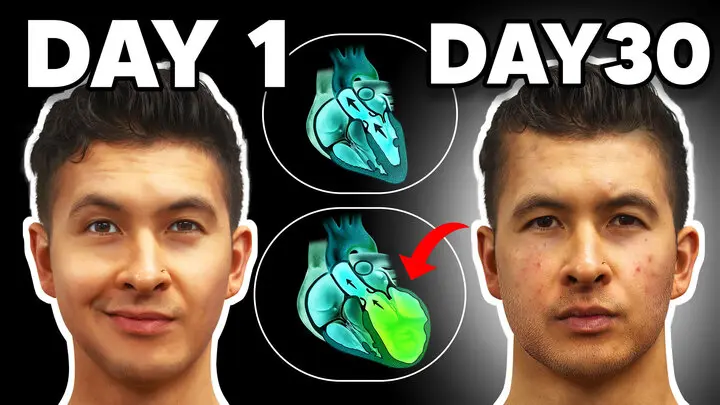The WORST Stretches For Back Pain (And What To Do Instead)
Always Googling "How to ease my lower back pain?" In this article, I show you the stretches you need to do (instead) to eliminate your back pain.
In addition to resorting to lower back exercises, one of the first solutions people struggling with back pain seek is lower back stretches to relieve their pain. But here's the truth. Many of these stretches are just short term fixes. They actually end up doing more harm than good. And are the opposite of what people should be doing to permanently eliminate their back pain.
For example, common stretches like toe touches, pulling your knees to your chest, and other similar stretches trigger what’s called a stretch reflex. This is a neurological phenomenon that temporarily reduces pain sensitivity. Meaning that you’ll often experience about 15-20 minutes of pain relief after you perform these stretches.
Obviously, many would perceive this effect to be beneficial. But there's a problem with this. And that is: you're putting our spine in a flexed position. That means you end up re-aggravating your discs. Worse still, after you’ve experienced temporary relief, the pain will return - and often worse than before. Which just creates a vicious cycle of thinking that these stretches are doing good and are the only solution for relief when in reality are just contributing to the pain.
The key is to break this cycle. If those stretches cured you, then you wouldn’t be watching this article. So, stop focusing your energy on stretches that bend the spine. Instead, focus your effort on movements and stretches for other parts of the body that can actually aid you on your road to being pain-free rather than make the pain worse. And within this article, I’ll share 4 such moves that can help do just that.
A short note before we begin: as the saying goes, prevention is always better than cure. That's why I design every BWS program carefully to ensure that it will not cause additional stress to your spine - which can worsen lower back pain. If you're interested in transforming your physique in the most time-efficient and safe manner:
Click the button below to take my analysis quiz to discover the best program for you:
↓
Move #1: The Cat Camel
Based on the findings of renowned back pain researcher Dr. Stuart McGill and his lab, the cat camel exercise has been found to be the least stressful way to incorporate some movement into the spine without aggravating it. It’s a helpful and healthy way to:
- Maintain good spinal movement AND
- Reduce any movement restrictions or friction within your spine
For these, get on all fours. Slowly move back and forth from a downward spinal curve with the head looking up like a cat.
And then move into a rounded spine while the head looks down like a camel.
Each cycle should take about three to four seconds. Note that you should always stay within a range of motion that is pain-free for you. Also, avoid pushing the end of each range. Remember: this is not a stretch. It’s the simple movement of the spine that’s more important.
Now, Dr. Stuart McGill measured spine stress on patients performing this movement. And he found that only 7-8 cycles were needed to help reduce spine friction and resistance. In fact, he found that further cycles could even undo the value of the exercise. So stick with that recommendation and avoid overdoing it.
After completing the cat camel, you should have reduced a bit of friction in the spine. That means we’re now ready to move onto some mobilization drills for other problematic areas within the body that may be contributing to your back pain.
By the way, if you’re someone who enjoys learning about the ‘whys’ of corrective exercise selection, you’re absolutely going to fall in love with our 3-on-1 coaching program. My team of experts here at BWS – and I – will always take the time to explain every single aspect of your personalized training (and nutrition) program. Find out more about how we can help you achieve your dream physique below:
Click the button below to find out more about the 3-on-1 coaching program:
↓
Move #2: The Psoas Stretch
The first drill will target one of our major hip flexor muscles, the psoas.
Due to prolonged sitting, this muscle is already pretty tight in most individuals as the activity puts it in a shortened position. To make matters worse, though, much of Dr. McGill’s EMG research showed that back pain actually tends to tighten this muscle even further. This is problematic because the psoas attaches to the lumbar spine. So when this muscle becomes tightened, it can actually pull your pelvis forward and down into an anteriorly tilted position. And this, in turn, can increase the compressive force on your lower back and worsen the pain you may be experiencing.
Stretching this muscle and taking it out of the shortened position it’s in all day can therefore help provide some relief to that lower back tension. However, Dr. Stuart Mcgill’s research has shown that your standard hip flexor stretch will not access this muscle due to its unique anatomy.
Instead, there’s a unique move we can do that helps to specifically stretch this muscle. To execute it:
- Get into a lunge position with one leg in front
- Raise your opposite arm overhead as you descend into the lunge
- Then, bend your torso slightly to the side away from your back leg and drop your shoulder back to further target and stretch the psoas
- You should feel a deep stretch in the psoas located in front of the hip of your back leg
- Hold this position for a couple of seconds
- Take a step forward to switch your front leg and the raised arm to repeat the sequence
The goal is to perform six strides at a time.
Move #3: Hip Airplanes
Next, we want to move onto a drill that will help us to:
- Further mobilize and open up the hips WHILE
- Strengthening some of our important hip muscles that tend to be weak and inhibited in those experiencing back pain
This is important to do because Dr. McGill’s research has shown that stiff and weak hips cause more motion to be transferred to the spine whenever we move or exercise. And can therefore worsen the back pain you’re experiencing.
To improve this, we’ll use a mobilization drill called hip airplanes. For these:
- Assume a single leg stance, brace your core, and grip the floor with your planted foot
- Then, place your hands on your hips and rotate your torso forward over your planted leg while kicking your back leg behind you
- Keep the back leg completely straight and your planted leg knee in a slightly bent position
- Next, rotate your hips in towards your planted leg (hip internal rotation) and then transition to rotating it away from your planted leg (hip external rotation)
A cue that may help is to think about simply moving your belly button towards your planted leg and then away to the side. You want the movement to come from your hips as opposed to simply twisting your upper body.
Aim for a total of 3 sets of 3 reps with this movement.
If needed, you can hold onto something for balance to get more familiar with the movement. Eventually, though, the goal is to progress this to the full hip airplanes with the arms spread out straight to the sides like an airplane. Doing so helps add another dimension of difficulty to the movement.
Move #4: Spine Hygiene
The last move is going to help with the daily upkeep of your back. Most of us sit for quite a bit throughout the day. And all of this sitting, especially when done in a poor posture, creates a lot of built-up stress on the discs in our back. This corrective drill here was designed by Dr. Stuart McGill to help combat that stress from sitting that can often worsen our back discomfort. To perform it:
- Simply stand with your arms overhead and count to 10
- Then, reach higher and farther back for another count of 10
- In this position, deeply inhale and work your way into an upright and stress-free standing posture
By breaking up every 20-30 minutes of prolonged sitting with this drill, you’ll be able to prevent an excessive build-up of stress on your lower back. And will be able to better prepare your back for each period of sitting.
Lower Back Pain Stretch Routine Guidelines
So, as a summary, if you’re experiencing back pain then try to replace the “bad” stretches that do more harm than good with these moves instead, and do them regularly.
Cat Camel: 7-8 cycles
Psoas Stretch: 6 strides
Hip Airplanes: 3 sets of 3 reps each side
Spine Hygiene Stretch: Perform after prolonged periods of sitting
Ideally, you want to do these daily or even multiple times a day to break up your sitting if you’re quite sedentary throughout the day. If this helps alleviate your pain and discomfort, then that’s a sign that you’re on the right track and is an indication that you’ll want to continue performing these stretches.
Takeaway
At the same time though just keep in mind that back pain is specific to you and your situation. There isn’t a general fix for everyone. Luckily, Dr. Stuart McGgill has created a book, Back Mechanic, that guides you through a self-assessment and then teaches you a solution matched to your specific pain. I’ve personally read through it and would highly recommend it. Once out of pain, he also has other books that can help you then focus more on performance. Here's the link to his books if you're interested.
And for those looking for a complete step-by-step program that uses science to show you how to properly train AND eat week after week to transform your body in the most efficient way possible, then:
Click the button below to take my analysis quiz to discover the best program for you:
↓
Anyways that’s it for today guys! Huge thank you to Dr. Stuart McGill for his help with the article, I hope you all enjoyed it! Don’t forget to give me a follow and connect with me on Instagram, Facebook, and Youtube as well, in order to stay up to date with my content.






